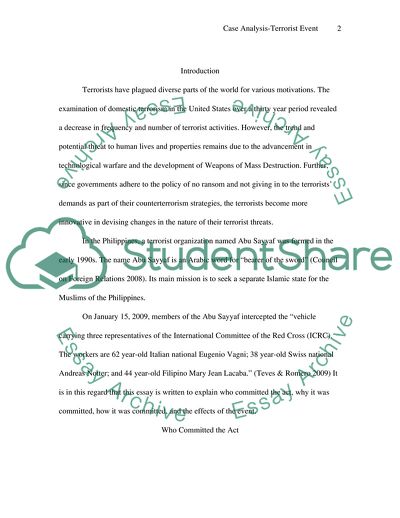Cite this document
(Abu Sayyaf: Terrorist Event Case Study Example | Topics and Well Written Essays - 1250 words, n.d.)
Abu Sayyaf: Terrorist Event Case Study Example | Topics and Well Written Essays - 1250 words. https://studentshare.org/social-science/1724416-case-analysis-terrorist-event
Abu Sayyaf: Terrorist Event Case Study Example | Topics and Well Written Essays - 1250 words. https://studentshare.org/social-science/1724416-case-analysis-terrorist-event
(Abu Sayyaf: Terrorist Event Case Study Example | Topics and Well Written Essays - 1250 Words)
Abu Sayyaf: Terrorist Event Case Study Example | Topics and Well Written Essays - 1250 Words. https://studentshare.org/social-science/1724416-case-analysis-terrorist-event.
Abu Sayyaf: Terrorist Event Case Study Example | Topics and Well Written Essays - 1250 Words. https://studentshare.org/social-science/1724416-case-analysis-terrorist-event.
“Abu Sayyaf: Terrorist Event Case Study Example | Topics and Well Written Essays - 1250 Words”. https://studentshare.org/social-science/1724416-case-analysis-terrorist-event.


